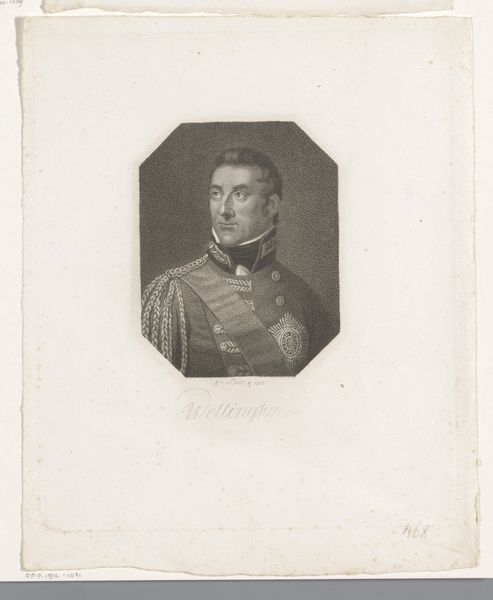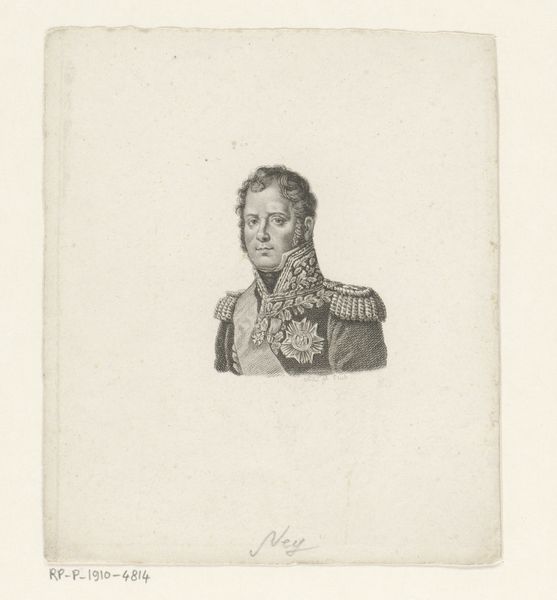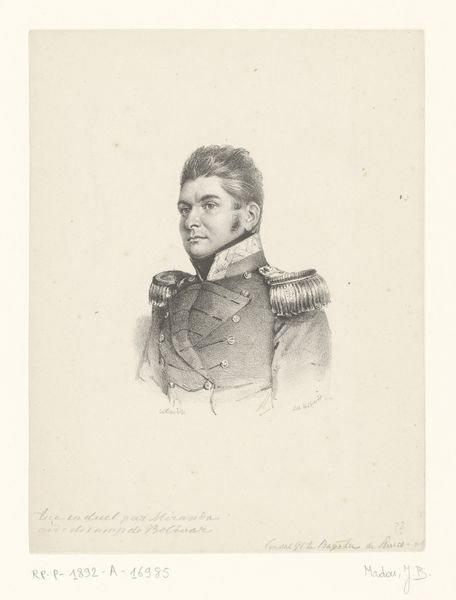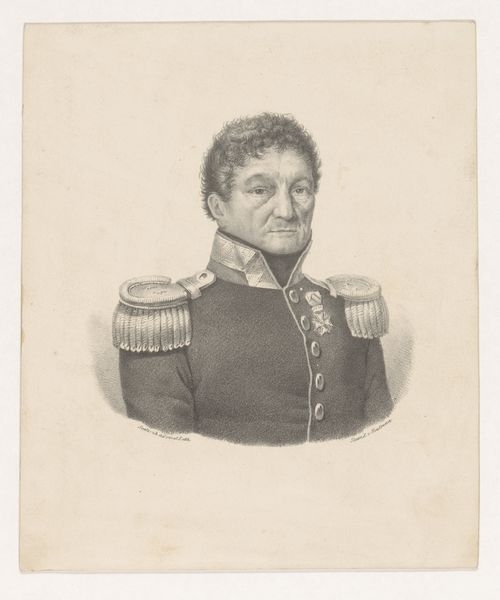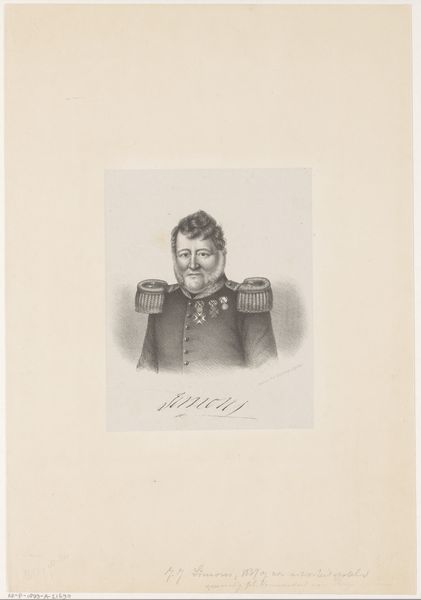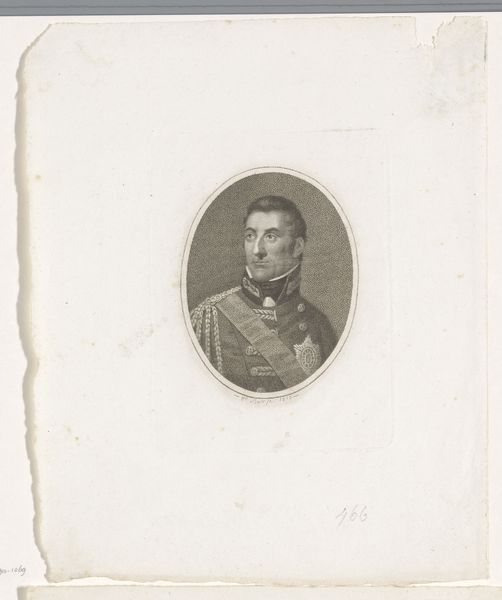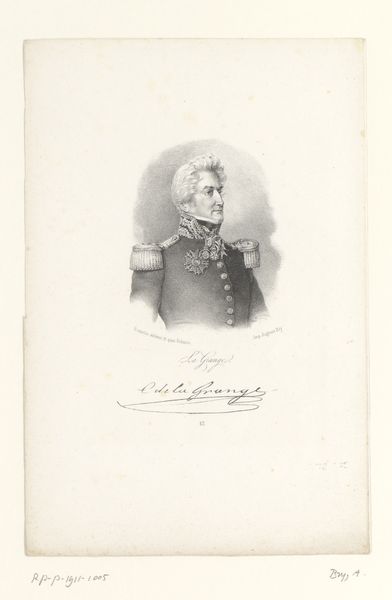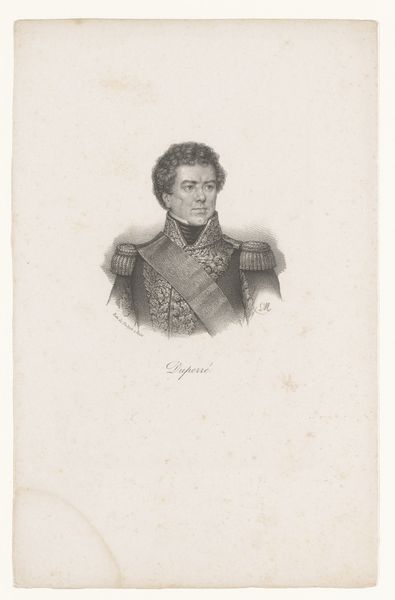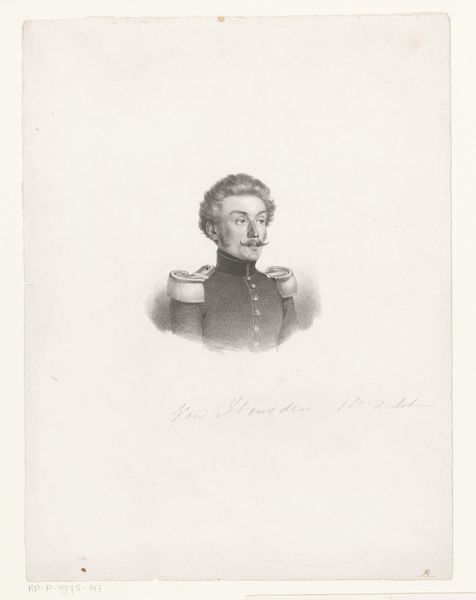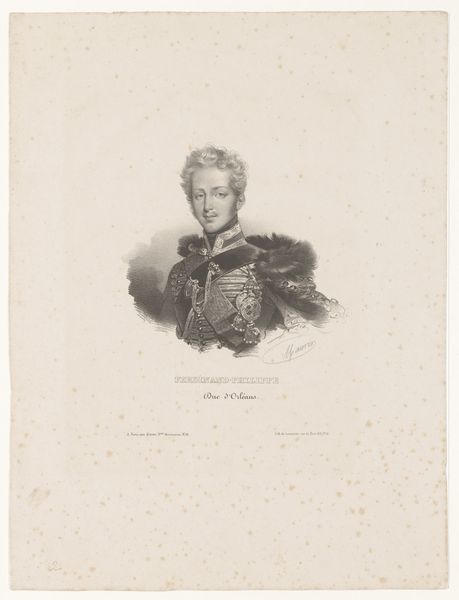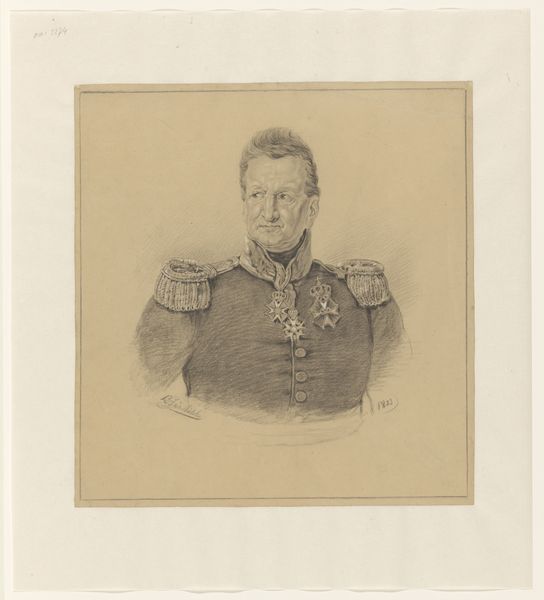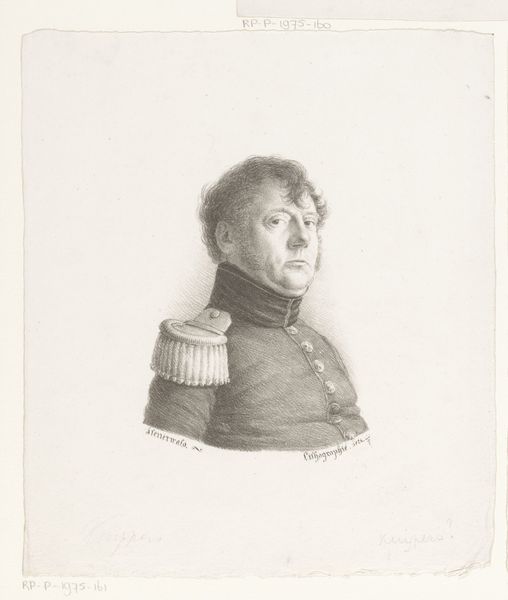
drawing, pencil
#
portrait
#
drawing
#
old engraving style
#
pencil drawing
#
pencil
#
portrait drawing
#
academic-art
#
realism
Dimensions: height 215 mm, width 176 mm
Copyright: Rijks Museum: Open Domain
Curator: Before us we have a pencil drawing from somewhere between 1822 and 1874, titled "Portret van onbekende militair," or Portrait of an Unknown Soldier, created by Christian Heinrich Gottlieb Steuerwald. Editor: There's a certain somberness about it, isn't there? A seriousness emphasized by the tight composition, really focusing on the man's face and uniform. He looks… burdened, somehow. Curator: The precision of Steuerwald's rendering captures the stoicism often associated with military figures. Consider the rigid collar and tightly buttoned coat; it's not just clothing, but an imposition of authority. Editor: Yes, it's fascinating how dress becomes a symbol. But who was he? The anonymity haunts me, suggesting a stand-in for all soldiers, perhaps hinting at the sacrifices made by ordinary men in service to larger power structures. Curator: Absolutely. Uniforms become stand-ins for archetypes. That epaulette on his left shoulder? A common military symbol, but here it almost appears as a burden, not an honor. I feel this weight contributes to the artwork's heavy mood. Editor: I wonder if Steuerwald intended to evoke those complex emotions. The realism gives it this objective quality, yet the choice of subject…the faceless soldier, that cannot be a coincidence. What did the artwork mean when first presented? The rise of national identity throughout Europe in the 19th century surely informs this. Curator: And note the slight asymmetry in his eyes and the precise attention given to his hair. There's realism but idealism, typical of academic art training at this time. Editor: This unknown soldier raises fundamental questions about conflict, duty, and representation, particularly in a time of emergent nation-states and militarism. He could have served anywhere for any monarch. The question this picture asks is whether they served their people well. Curator: Ultimately, this small drawing achieves something far beyond a mere likeness, which is not easy. Editor: Yes, that is why this particular rendering feels potent even today.
Comments
No comments
Be the first to comment and join the conversation on the ultimate creative platform.
